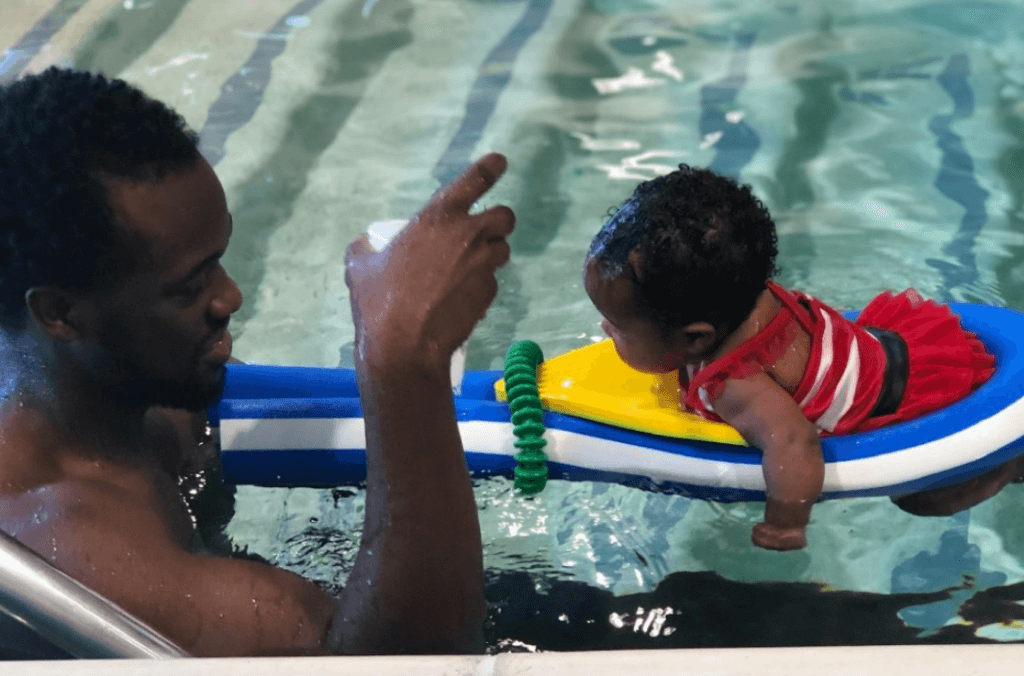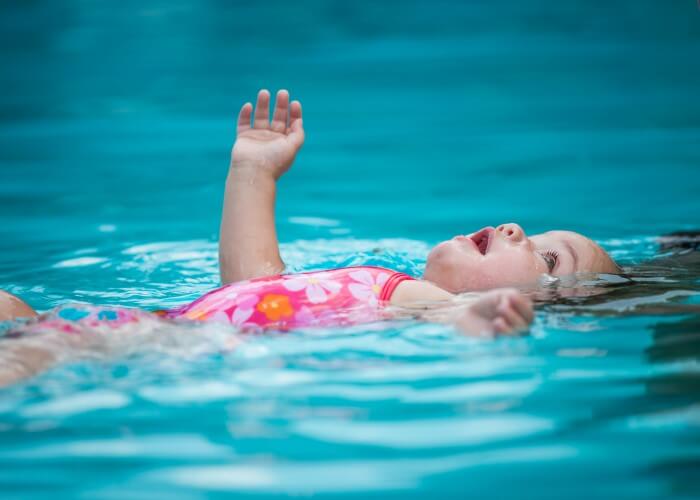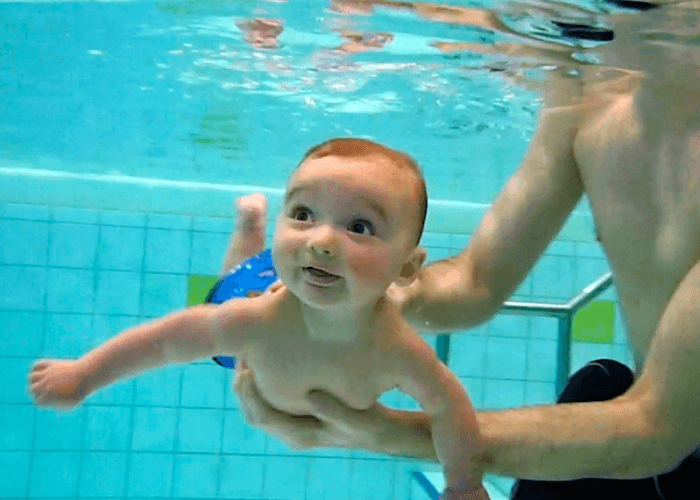The Right Time for Water Safety

By Xonzy Gaddis, Swimming World College Intern.
Teaching water safety in the early stages of a human’s life is essential, especially with drowning being one of the major accidental causes of death of children. Water safety classes are given to parents and their babies as early as three months old, but many parents are hesitant to do so at such a young age. Even swim instructors debate the correct age to have babies in the water due to their fragility and value as a human being. On the other hand, many parents find it beneficial to put their children in the water early on, believing it is safer for them to learn basic knowledge about the water and develop a “feel” for it. Conversely, parents may not realize the adverse effects of exposing their children to a pool early on, including a number of health risks.
It is important to be aware of both positive and negative consequences of putting children in the water early on in their lives. Ultimately, it is up to the parents to decide how and when to introduce their kids to the greatest sport in the world. Do your research to make the most informed decision.
Infant Health Risks

Photo Courtesy: Donnie Ray Jones
Although a number of parents believe swimming can help prevent children from developing asthma, swimming too early can put a child’s lung development at risk. In an article published in the Journal of Pediatric Pulmonology, the researchers found a number of respiratory issues that babies can develop from acute exposure to chlorine. Some of these include the development of rhinitis, tracheobronchitis, pneumonitis, pulmonary edema, and diffuse bronchiolitis. Additionally, these respiratory issues can stem from the types of pools in which babies are usually taught to swim. According to the researchers, parents often take their babies to water safety classes in pools that tend to be warmer and, at times, more polluted. Putting babies in this type of environment may be damaging to their health depending on their stage of development and the cleanliness of the facility.
Additionally, author Virginia Newman writes: “Children should not be allowed to develop habits that are safe for them now but would be unsafe at a later date.” Essentially, Newman explains that having children in the water before they are truly able to understand why they are in the water can be dangerous. Children tend to be quite curious, and if left alone even for a minute near a pool, they can fall in and be in serious danger. She believes it can be unwise to create a false sense of security for yourself and your child by leaving them alone near water. In addition, it is advised to teach children about water safety vocally instead of just jumping in the water with them.
To find out more information on when to put a baby in the water and where, it is advised that you speak directly to an instructor or a doctor to see how safe it will be. The American Association of Pediatrics says children can safely take swim lessons as early as age 1 due to research that showed a reduced risk of drowning in preschoolers who had taken swimming lesson (the previous recommendation was age four).
Parent’s Perspective

Photo Courtesy: Wikimedia Commons, MasterFinally
Ultimately, the ones choosing to put their children in the water early on is the parents. Kinderlynn Wiley, mother of six-month-old Kourtlynn Wiley, is more comfortable with having her baby girl in the water early on. This sense of comfort stems from knowing the baby is getting a feel for the water, exploring with proper supervision and understanding that the water is not something to be afraid of. Wiley continues to defend having Kourtlynn in the water early on by saying the best way to protect babies from the dangers of the water is by parents always having their hands and eyes on the baby, not taking a single moment away from them in an aquatic area.
While it can be easy for parents to feel nervous about taking their babies in the water for the first time, Wiley assures that the benefits outweigh the risks. Her initial fear came from whether or not the baby girl would acclimate herself to the feel of the water; however, the fear dissipated after seeing the results of her baby’s rapid physical development. According to Healthline, an additional benefit of having babies get an early feel for the water is to increase motor development and arm and leg strength. Swimming gives babies exercise and allows them to create neuromuscular connections that are important to forming the foundation for a healthy lifestyle later in life.
At times, humans should take risks to teach children the dangers as well as the benefits of being in the water. Make sure to speak with a physician and an experienced swim instructor to find out the right time to put your child in the water. In the long run, swimming is beneficial to children by providing opportunities to stay active, exposure to a positive social environment and developing a competitive mindset. Be safe, and have fun in the water this year with your family and friends!
To find out more about water safety, follow the links below:
- Death of Bode Miller’s Daughter Reiterates Need for Drowning Prevention Knowledge
- Swim Safer Week: From Life Skills to Life Saver
- Red Cross: Water Safety
-All commentaries are the opinion of the author and do not necessarily reflect the views of Swimming World Magazine nor its staff.



